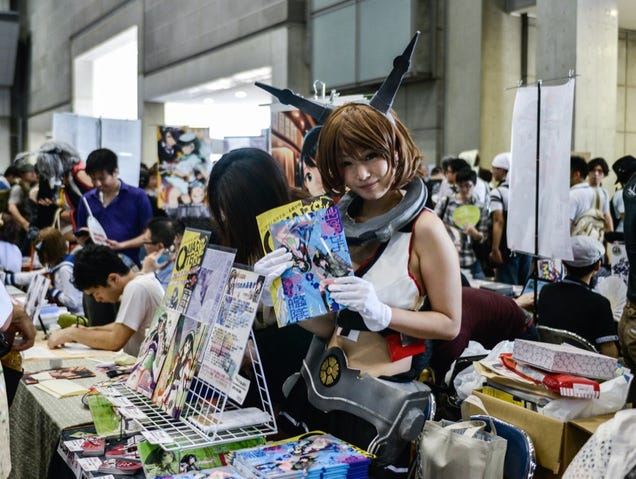Japan carrier ANA says quarterly profit more than doubles
Tokyo (AFP) —
Japanese carrier ANA said Wednesday its net profit more than doubled to $68 million for the April-June quarter thanks to strong results in its international business on the back of a weak yen.
ANA Holdings, the parent company of All Nippon Airways, reported the soaring profit after an expansion at Haneda airport in downtown Tokyo allowed it to run more overseas routes and fuel costs dropped owing to a decline in crude oil prices.
The company said its logged a group net profit of ¥8.4 billion for the first quarter of the fiscal year to March 2016, up from ¥3.5 billion a year earlier.
Operating profit soared to ¥16.7 billion from ¥347 million during the same period last year, with revenue up 7.0 percent at ¥413.9 billion.
ANA left its full-year forecast unchanged, still expecting net profit of 52 billion yen on revenue of ¥1.79 trillion.
“International passenger numbers and revenues both increased due to steady business demand and growing numbers of in-bound travellers to Japan,” the company said in a statement.
Domestic passenger revenue rose 2.7 percent to ¥152.3 billion while international passenger income jumped 9.2 percent to ¥119.3 billion, ANA said.
“The Japanese aviation sector is enjoying strong demand for business use on the back of the nation’s economic recovery,” said Hiroshi Hasegawa, analyst at SMBC Nikko Securities in Tokyo.
“A weak yen has helped boost the number of foreign tourists coming to Japan, especially from Asian countries,” he told AFP.
ANA has been in a spat with its rival and one-time flag-carrier Japan Airlines over the allocation of landing slots at Haneda, after JAL emerged from one of the nation’s biggest-ever bankruptcies following a government rescue.
“ANA has continued to benefit from an expansion of international slots at Haneda,” Hasegawa said.
ANA recently said it was throwing a lifeline to bankrupt domestic rival Skymark Airlines, Japan’s third-biggest airline, which flies on domestic routes.
Skymark filed for bankruptcy protection in late January in the face of potentially massive penalties linked to a cancelled US$2.2 billion jet order with Airbus.
The Skymark deal would expand ANA’s landing slots and give it the upper hand in setting airfares.
Earlier this month, US carrier Delta Air Lines joined a rival bid to rescue Skymark, whose creditors will vote on the competing proposals next month.
If the Delta deal is successful, it would be the first foreign airline to get access to slots for domestic flights at Haneda.
Japan Airlines is scheduled to release its first-quarter results on Thursday.
Tokyo (AFP) —
Japanese carrier ANA said Wednesday its net profit more than doubled to $68 million for the April-June quarter thanks to strong results in its international business on the back of a weak yen.
ANA Holdings, the parent company of All Nippon Airways, reported the soaring profit after an expansion at Haneda airport in downtown Tokyo allowed it to run more overseas routes and fuel costs dropped owing to a decline in crude oil prices.
The company said its logged a group net profit of ¥8.4 billion for the first quarter of the fiscal year to March 2016, up from ¥3.5 billion a year earlier.
Operating profit soared to ¥16.7 billion from ¥347 million during the same period last year, with revenue up 7.0 percent at ¥413.9 billion.
ANA left its full-year forecast unchanged, still expecting net profit of 52 billion yen on revenue of ¥1.79 trillion.
“International passenger numbers and revenues both increased due to steady business demand and growing numbers of in-bound travellers to Japan,” the company said in a statement.
Domestic passenger revenue rose 2.7 percent to ¥152.3 billion while international passenger income jumped 9.2 percent to ¥119.3 billion, ANA said.
“The Japanese aviation sector is enjoying strong demand for business use on the back of the nation’s economic recovery,” said Hiroshi Hasegawa, analyst at SMBC Nikko Securities in Tokyo.
“A weak yen has helped boost the number of foreign tourists coming to Japan, especially from Asian countries,” he told AFP.
ANA has been in a spat with its rival and one-time flag-carrier Japan Airlines over the allocation of landing slots at Haneda, after JAL emerged from one of the nation’s biggest-ever bankruptcies following a government rescue.
“ANA has continued to benefit from an expansion of international slots at Haneda,” Hasegawa said.
ANA recently said it was throwing a lifeline to bankrupt domestic rival Skymark Airlines, Japan’s third-biggest airline, which flies on domestic routes.
Skymark filed for bankruptcy protection in late January in the face of potentially massive penalties linked to a cancelled US$2.2 billion jet order with Airbus.
The Skymark deal would expand ANA’s landing slots and give it the upper hand in setting airfares.
Earlier this month, US carrier Delta Air Lines joined a rival bid to rescue Skymark, whose creditors will vote on the competing proposals next month.
If the Delta deal is successful, it would be the first foreign airline to get access to slots for domestic flights at Haneda.
Japan Airlines is scheduled to release its first-quarter results on Thursday.







